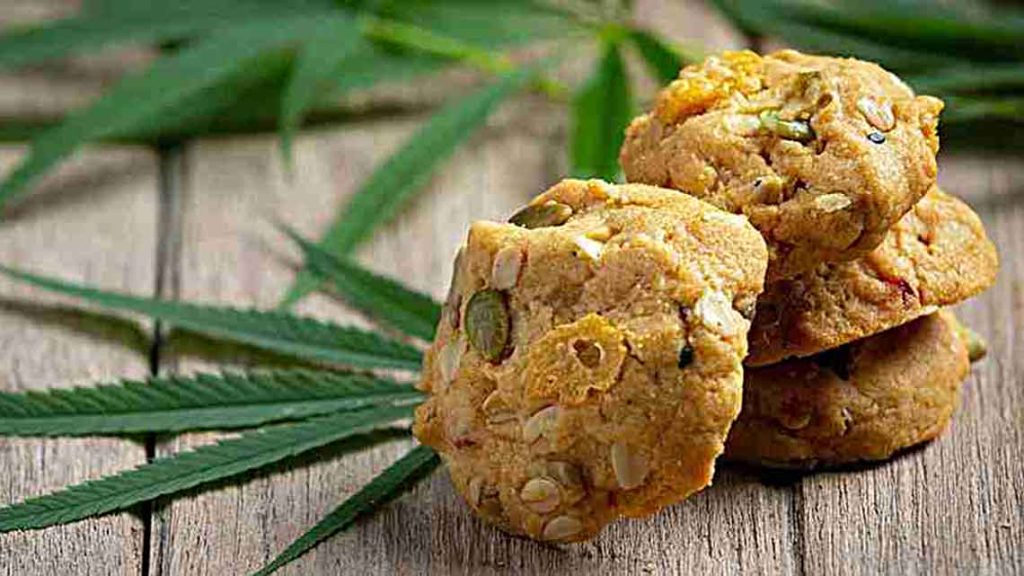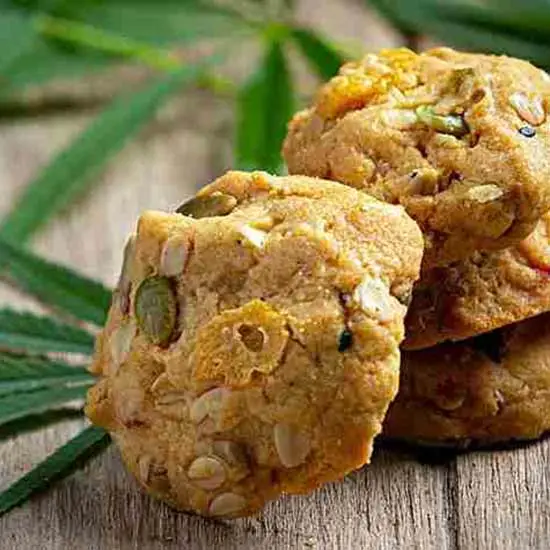As the popularity of cannabis continues to soar, edibles have emerged as a delicious and discreet way to experience the effects. Whether you are a seasoned enthusiast or a curious newcomer, this guide aims to demystify the realm of cannabis-infused edibles. We are offering insights into their science, potency levels, and dosage. Join us as we embark on a flavorful journey, exploring the ins and outs of cannabis consumption through the lens of tasty creations that go beyond the stereotypical brownie. Get ready to savor the experience and unlock the secrets of enjoying cannabis in its most mouthwatering forms!
So Why Do People Love Cannabis Edibles?
One appeal of cannabis edibles lies in their discretion and ease of use. They provide a more inconspicuous way for individuals to enjoy the benefits of cannabis. All without the traditional act of smoking! This shift aligns with a broader cultural shift towards wellness and a preference for diverse cannabis consumption options.
Moreover, as more regions around the world embrace the legalization of cannabis for medicinal and recreational purposes, a new market has emerged, fostering innovation in the edibles sector. Creative chefs, entrepreneurs, and established brands like 7ENGINES have quickly provided for this growing demand. We have introduced loads of cannabis-infused edibles – from gourmet chocolates and artisanal gummies to beverages and savory snacks.
The appeal of cannabis edibles also extends to those seeking precise dosage control and a longer-lasting, more gradual onset of effects. Edibles are attractive to individuals exploring cannabis for its therapeutic benefits, as well as those who want a unique and flavorful experience.
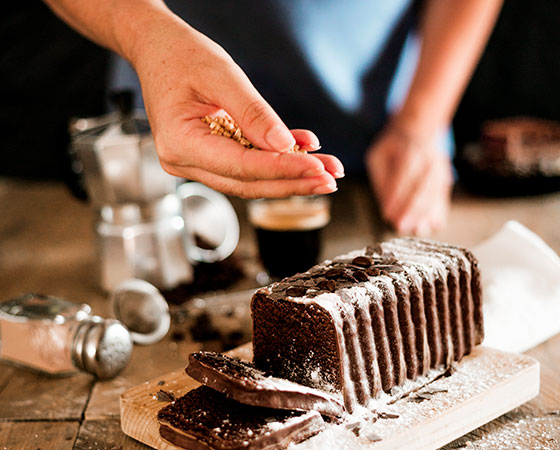
Understanding Cannabis Edibles:
Cannabis edibles refer to food and beverage products infused with cannabinoids. Most commonly, THC (tetrahydrocannabinol) and CBD (cannabidiol) extracts are the ingredients. The infused products deliver the effects of cannabis when consumed, providing an alternative to traditional methods of consumption such as smoking or vaping.
Different types of edibles:
Edibles come in many forms, from sweet treats like brownies, gummies, and chocolates to savory options like snacks and beverages. The infusion process involves incorporating cannabis extracts or oils into the recipe, ensuring an even distribution of cannabinoids throughout the product. The potency of cannabis edibles is in milligrams/THC or CBD per serving. Sometimes, THC and CBD are both used together.
How edibles differ from other cannabis consumption methods:
Cannabis-infused edibles are usually taken orally (eaten!). The cannabinoids are absorbed through the digestive system, leading to a slower onset of effects as compared to smoking or vaping.
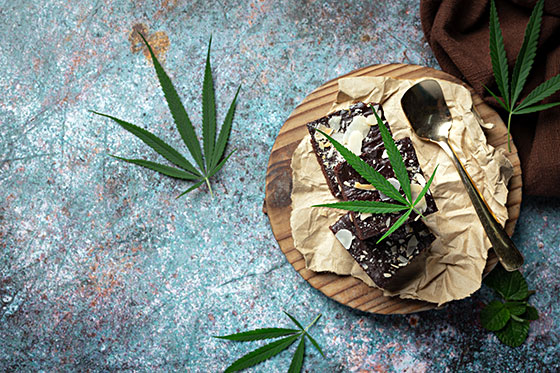
- The effects of edibles typically have a delayed onset, often taking 30 minutes to two hours to kick in. However, they tend to last longer (sometimes for several hours).
- Achieving precise dosage with edibles can be challenging, and the effects can vary based on factors like individual metabolism. It is crucial to start with a low dose and be patient before consuming more.
- Metabolizing cannabinoids in the liver can produce different metabolites, potentially impacting the overall health effects. The oral consumption method is preferred by those who want to avoid inhaling smoke.
- Cannabis-infused edibles offer a wide range of flavors and experiences, allowing users to enjoy the taste with the effects. They can be appealing to those who are not fond of the taste or smell of smoked cannabis.
The Science Behind Edibles:
There exists an intricate dance between cannabinoids and the human body’s endocannabinoid system. Cannabinoid receptors, CB1 and CB2, are found throughout the body. CB1 receptors are primarily located in the central nervous system, while CB2 receptors are more prevalent in the peripheral tissues, especially in immune cells. When cannabinoids bind to these receptors, they influence the release of neurotransmitters and modulate cellular activities.
The interaction between cannabinoids and the ECS regulates various physiological processes, including mood, appetite, sleep, immune response, and pain perception. The specific effects depend on the type of cannabinoid, the concentration, and unique physiology.
Cannabis contains over 100 different cannabinoids, with THC (tetrahydrocannabinol) and CBD (cannabidiol) being the most well-known. THC primarily interacts with CB1 receptors, leading to the psychoactive effects associated with cannabis use. CBD has a more complex mechanism and may influence the endocannabinoid system indirectly, modulating receptors and enhancing the effects of endocannabinoids.

Different Choices of Cannabis Edibles:
1. Chocolates and Confections: Indulge your sweet tooth with cannabis-infused chocolates, truffles, and candies. The rich and velvety texture of chocolates provides a luxurious experience, and precise dosing makes it easier to manage your cannabis consumption.
2. Gummies and Fruit Chews: Bursting with fruity flavors, cannabis-infused gummies, and fruit chews offer a convenient and enjoyable way to consume cannabinoids. They often come in many shapes, sizes, and flavors- allowing users to tailor their experience.
3. Beverages: Cannabis beverages have gained popularity, ranging from infused teas and coffees to sodas and elixirs. These beverages offer a discreet and refreshing way to enjoy the effects of cannabinoids without the need for traditional smoking or vaping.
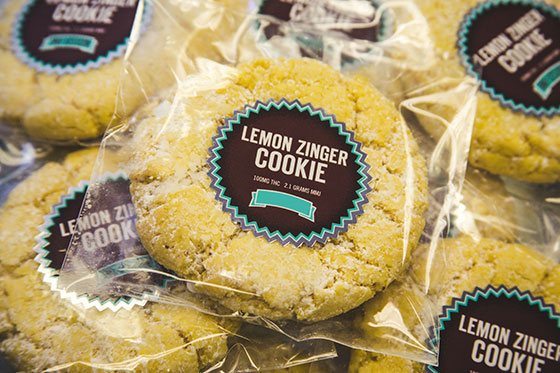
5. Tinctures and Sublinguals: Ideal for precise dosing, tinctures and sublinguals are liquid extracts of cannabis used under the tongue. They offer a rapid onset of effects and are suitable for users who want a controlled and measured experience.
6. Infused Snack Foods: From savory popcorn to crunchy pretzels, snack foods are now available infused with cannabinoids. These snacks provide a tasty alternative for those who prefer something other than sweets.
7. Hard Candies and Lollipops: For those who prefer a longer-lasting and slow-release experience, hard candies and lollipops provide a flavorful and discreet option. They are convenient for on-the-go consumption.
8. Cannabis-Infused Cooking Oils and Butter: Elevate your home cooking with cannabis-infused oils and butter. These versatile ingredients allow you to create infused dishes, giving you control over the flavors and dosages.

9. Dissolvable Powders: Dissolvable cannabis powders can be added to beverages or sprinkled on food. They offer a discreet and tasteless option for those who want to incorporate cannabinoids into their daily routine without the need for traditional edibles.
10. Specialized Diet Edibles: Catering to various dietary preferences and restrictions, edibles are designed for those following vegan, gluten-free, or other specialized diets. These options ensure inclusivity and accessibility within the cannabis edible market.
As the cannabis industry evolves, so does the array of edibles available to consumers.

A Hollywood Example:
What Can Affect the Potency of Cannabis Edibles?
Proper dosage is essential for ensuring the safety of cannabis users. Consuming too much cannabis, whether in the form of THC-rich edibles or other products, can lead to adverse effects. Effects can include anxiety, paranoia, nausea, and, in extreme cases, more severe symptoms. Adhering to appropriate dosage guidelines, you can avoid potential harm.
Production Methods:
The methods used in the production of cannabis-infused edibles can impact potency. Different manufacturers may employ various extraction, infusion, and cooking techniques, leading to variations in the final concentration of cannabinoids in the product.
Ingredient Composition:
The choice of ingredients (and their composition) in the edible can influence cannabinoid absorption. For example, the fat content in edibles can affect the extraction and binding of cannabinoids, resulting in different potency levels.
Strain and Plant Variability:
The cannabis plant itself exhibits variability in cannabinoid content depending on the strain and growing conditions. Different cannabis strains may have varying THC and CBD concentrations, contributing to differences in potency among edibles made from each.
Testing and Labeling Practices:
The accuracy of potency testing and labeling practices can vary between different manufacturers and regions. In some cases, there may be discrepancies between the labeled potency and the actual content of cannabinoids in the product.
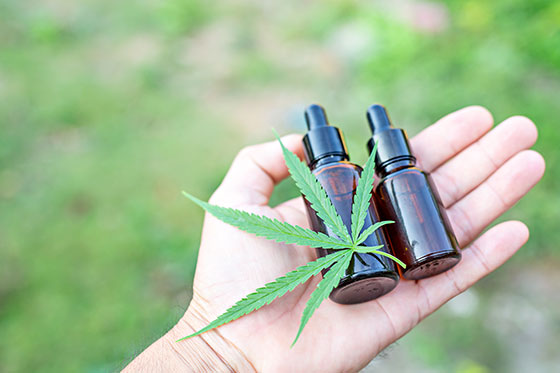
Decarboxylation Process: Decarboxylation, which activates cannabinoids through heating, can impact the final potency of edibles. Variability in decarboxylation methods can lead to differences in the amounts of THC and CBD in the finished product.
Storage Conditions: Improper storage conditions, such as exposure to heat or light, can degrade cannabinoids over time, affecting the overall potency of the cannabis edible. Variability in storage practices among manufacturers and distributors can contribute to differences in product quality.
Regulatory Environment: Variability in regulations and testing requirements across different jurisdictions can contribute to differences in the quality control measures implemented by manufacturers. Some regions may have more stringent testing standards than others.
Baking and Cooking Temperatures: The temperatures used during the cooking or baking process can impact cannabinoid stability. High temperatures may degrade cannabinoids, affecting the final potency of the edible.
Cannabis Edibles & Dosage:
Calculating and controlling dosage is crucial for a safe and enjoyable cannabis experience, especially when it comes to edibles. Here are some tips to help you navigate and manage cannabis dosage effectively:
Start Low and Go Slow: Begin with a low dose, especially if you are new to cannabis or trying a new product. Edibles can have delayed onset effects, and taking too much too quickly can lead to discomfort. Gradually increase your dosage over time as needed.

Understand Labeling: Pay close attention to product labels, which typically provide information about the total THC and CBD content per serving or package. This information is crucial for accurate dosage calculations.
Standardized Products: Choose products from reputable manufacturers like 7ENGINES that prioritize consistent dosing. Look for edibles with standardized THC and CBD concentrations to ensure more predictable effects.
Consider Your Tolerance: Be mindful of your tolerance level. Factors such as body weight, metabolism, and experience with cannabis can influence how you respond to different dosages.
Account for Delayed Onset:
Cannabis edibles often have a delayed onset of effects compared to smoking or vaping. Be patient and wait 1-2 hours before considering additional consumption to avoid overconsumption.
Use Online Calculators:
Online dosage calculators can be helpful tools. These calculators take into account factors like the THC percentage in your cannabis product, the amount used, and the number of servings to help estimate dosage.
Divide Cannabis Edibles into Smaller Portions:
If your edible comes in a larger serving size, consider dividing it into smaller, more manageable portions to have better control over your dosage.
Keep a Journal:
Keep a record of your cannabis consumption experiences, including the type of product, dosage, and effects observed, to fine-tune your dosing strategy over time.
Be Mindful of Cross-Tolerance:
If you use cannabis regularly, especially in different forms (edibles, smoking, etc.), be aware of potential cross-tolerance. Your tolerance to one form of consumption can affect how you respond to others.
Consult with a Budtender or Healthcare Professional:
Seek advice from knowledgeable budtenders at 7ENGINES or consult with a healthcare professional, especially if you have specific health concerns or are using cannabis for medicinal purposes.
Know Your CBD:
If using CBD-dominant products, understand that CBD can modulate the effects of THC. It may mitigate some of the psychoactive effects, but it can also enhance certain therapeutic benefits.

Conclusion
In the ever-expanding landscape of cannabis consumption, edibles have emerged as a delectable and diverse avenue for enthusiasts and newcomers alike. From the science behind their effects to the myriad choices available, we hope this guide a gateway to a flavorful journey. Cannabis-infused edibles offer a discreet and enjoyable way to experience the benefits of marijuana. They also symbolize the evolution of a growing industry.
Cheers to a world where the pleasure of cannabis meets the joy of culinary indulgence!
The information provided is not a substitute for professional medical advice, diagnosis, or treatment. Consult with a qualified healthcare professional for personalized advice based on your medical condition.

